Isfahan
Isfahan, nicknamed "Half the World," combines ancient Persian art and architecture with ageless appeal. Wander through its medieval streets, appreciate the magnificent blue tilework, and enjoy genuine local friendliness. A must-see for anybody looking to see Iran's rich cultural core.


JW Marriott Hotel South Beach
Chic Marina Bay retreat with skyline views

Singapore Botanic Gardens
A Green Escape in the Heart of the City
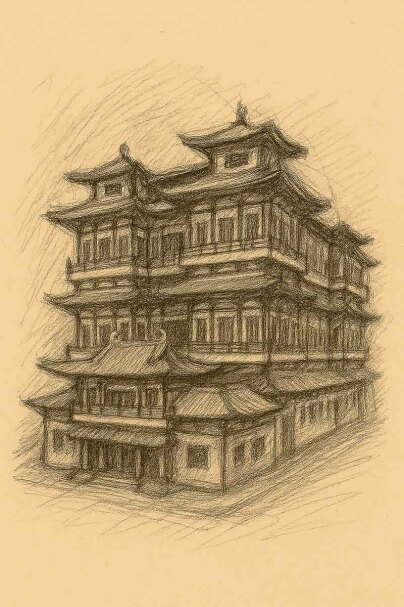
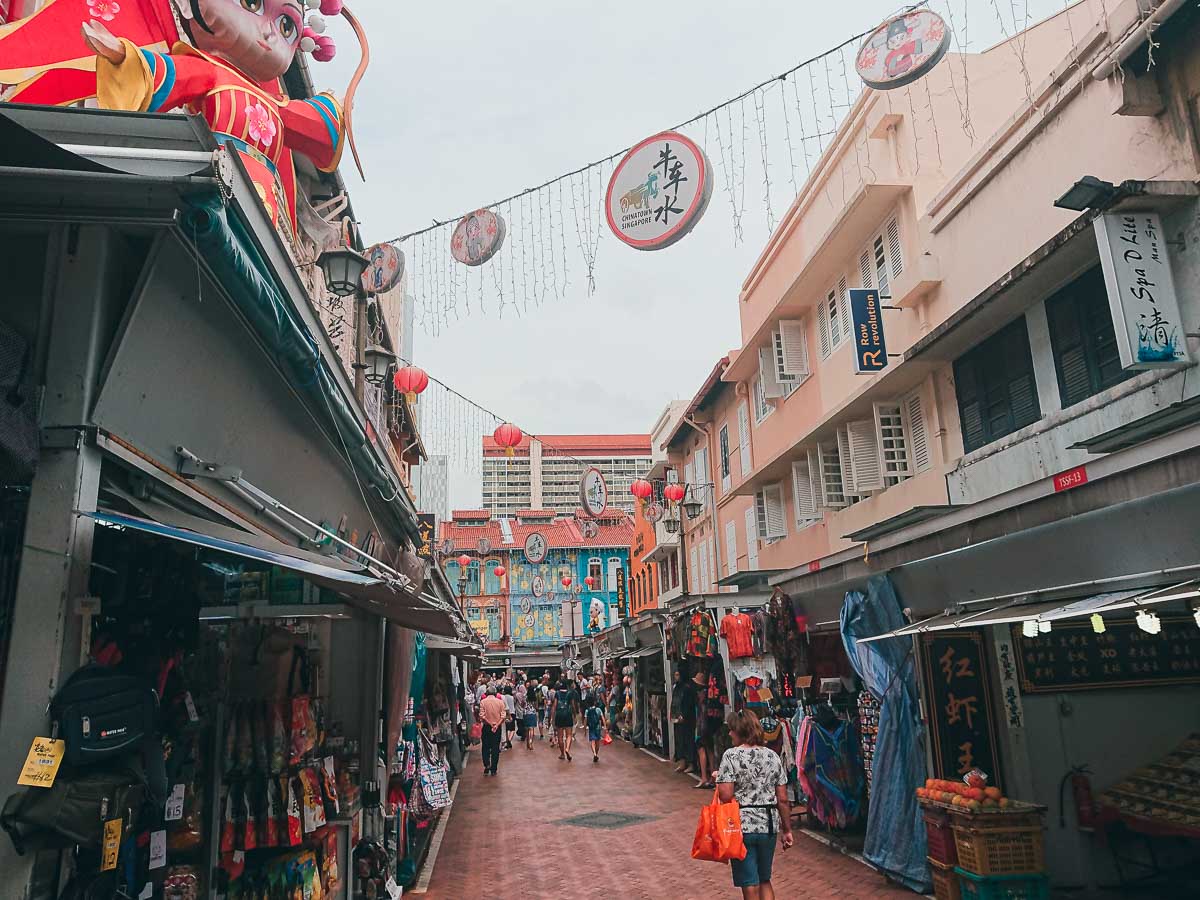
Chinatown
Exploring the Heart of Culture
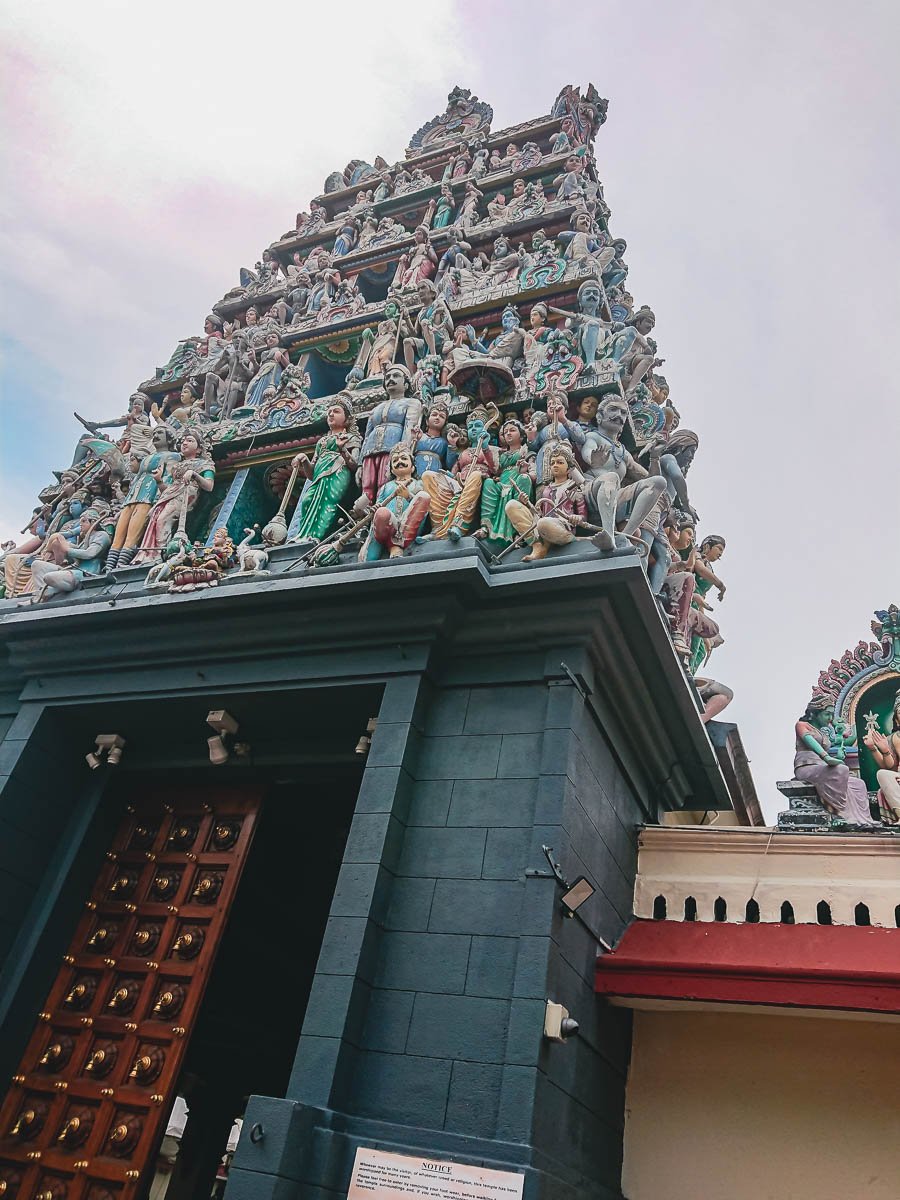
Sri Mariamman Temple
A Glimpse into Spiritual Grandeur
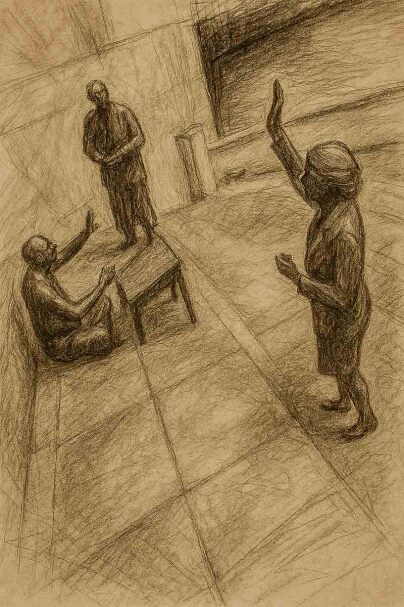
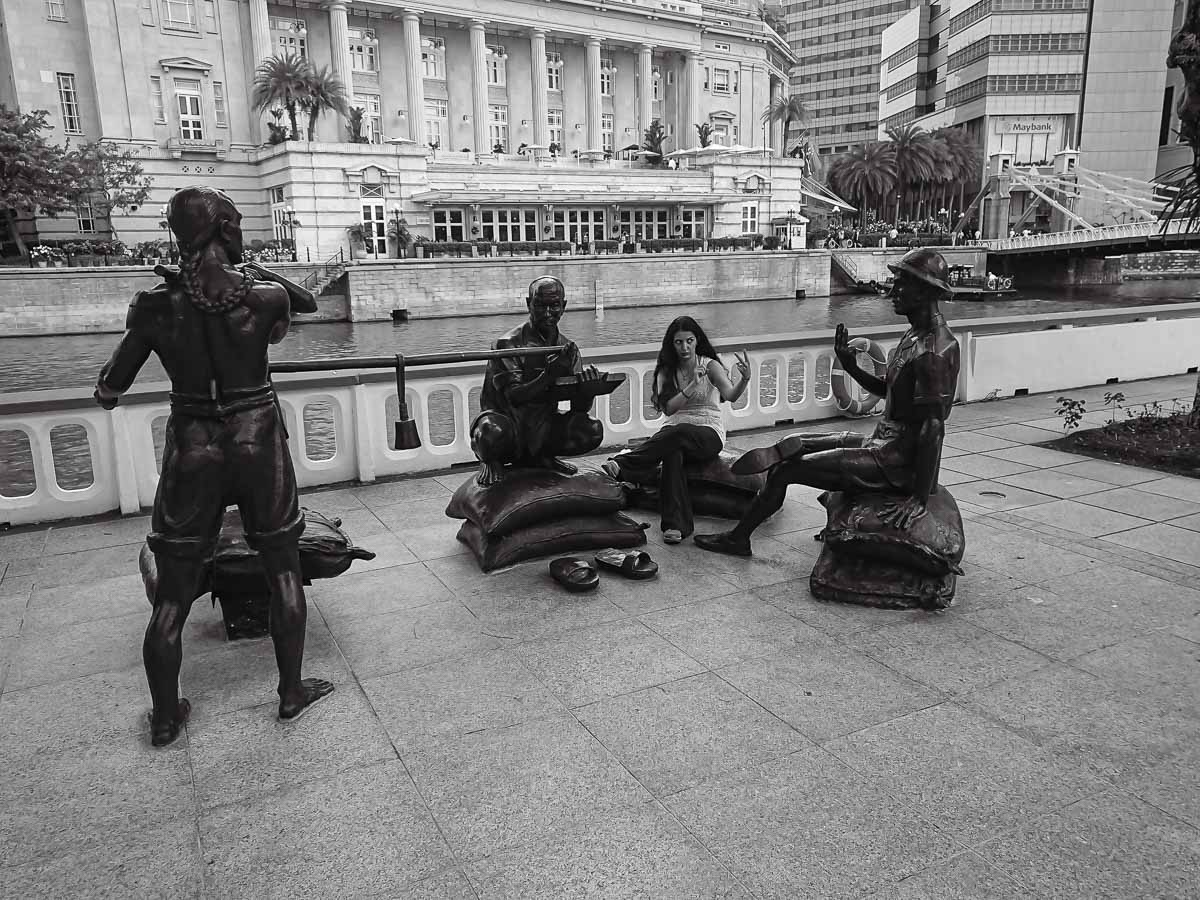
A Great Emporium
Sculpting Singapore’s Trading Past
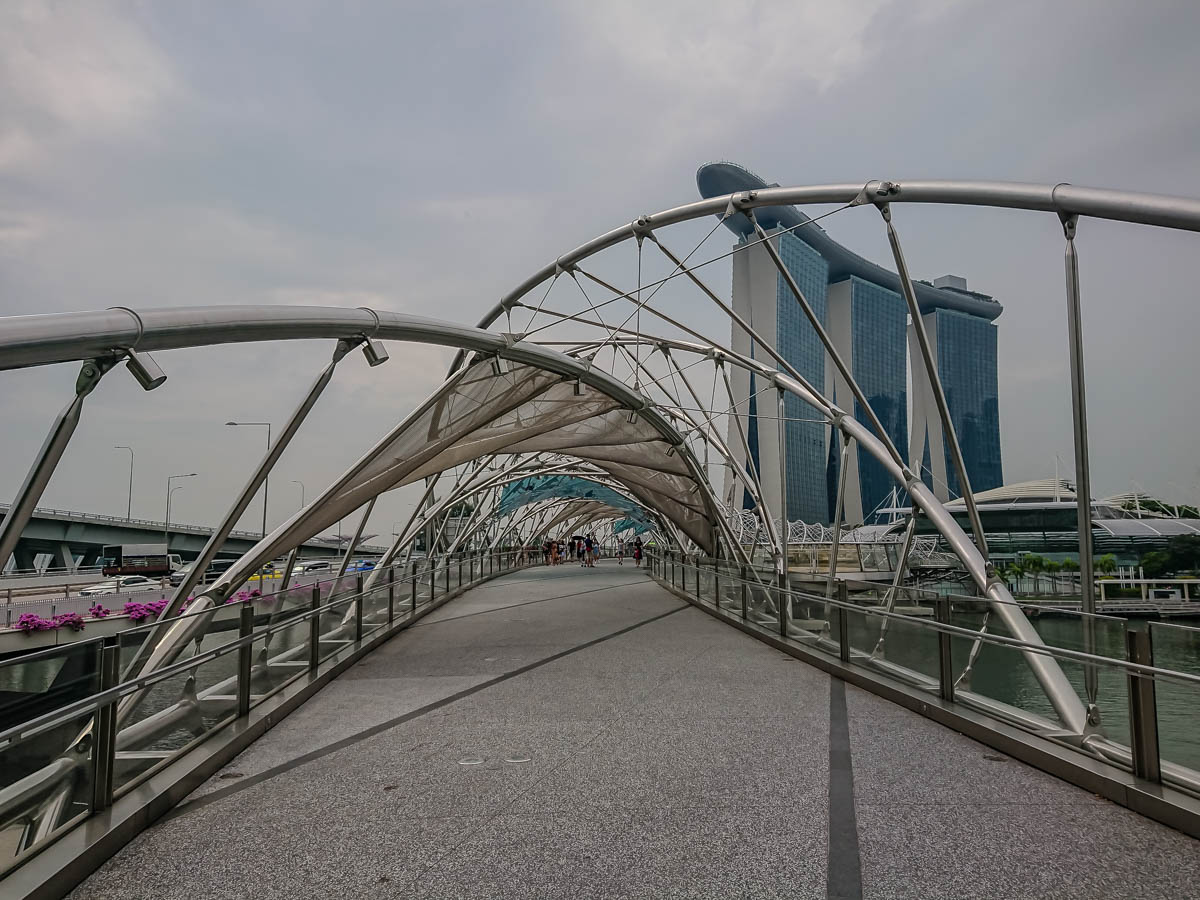
The Helix Bridge
Walking Through DNA
Imam (Shah) Mosque of Isfahan
A Timeless Masterpiece of Persian-Islamic Architecture

Overview
The stunning Imam Mosque (also known as Masjed-e Jame Abbasi) dominates Isfahan's grand Naqsh-e Jahan Square and is considered the crown gem of Persian architecture. This UNESCO-listed masterpiece is more than simply a mosque; its beautiful tilework and soaring domes highlight the magnificence of the Safavid era. It's a must-see stop on every Iranian travel, serving as both a spiritual retreat and an artistic wonder.
Location & Accessibility
Imam Mosque, which is perfectly located on the southern side of Naqsh-e Jahan Square, provides unparalleled ease for visitors. Its exceptional location allows you to quickly access Isfahan's must-see attractions, including the delicate beauty of Sheikh Lotfollah Mosque, Ali Qapu Palace's panoramic terrace, and the bustling Grand Bazaar. This accessibility strengthens its position as Isfahan's most visited architectural asset.

Why Visit the Imam Mosque?
1️⃣ Masterpiece of Design – Breathtaking tilework, perfect symmetry & towering minarets make this Iran’s most stunning mosque.
2️⃣ UNESCO Treasure – A crown jewel of Naqsh-e Jahan Square, cherished by Iranians & travelers alike.
3️⃣ Soul-Stirring Beauty – Where divine tranquility meets awe-inspiring artistry.
4️⃣ Safavid Splendor – A 17th-century icon of Persia’s architectural golden age.


A Glimpse Into History
Shah Abbas I commissioned this Safavid treasure in 1611, and it served as both a dynastic homage and a religious display. While construction was completed under Shah Safi, its name changed to Shah Mosque, then Soltani Mosque, and finally Imam Mosque after the Revolution. Today, it serves as Persia's most exquisite architectural time capsule from Islam's golden period.
Architectural Wonders of Imam Mosque
🕌 A 52-meter tiled dome – among Iran’s tallest
🏛️Four grand iwans framing the courtyard, each a portal to artistry
🌈 Haft-rangi tiles – Persia’s iconic 7-color floral mosaics
🎙️ Whispering acoustics – where voices magically carry
✍️Sublime calligraphy by legendary scribes like Ali Reza Abbasi

Exploring Imam Mosque's Layout
🏛️ Grand Portal – Often called Iran's most beautiful mosque entrance, facing Naqsh-e Jahan Square
⛲ Central Courtyard – Framed by four majestic iwans with a soothing fountain
🕌 Twin Prayer Halls – Serene shabestans (east & west) for quiet contemplation
📚 Historic Madrasas – Soltaniyeh & Naseriyeh schools flanking the mosque
💧 Elegant Sangabs – Seven marble/jade basins for ritual ablutions


Tips for Visitors
⏳ Time Needed: 1.5-2 hours to soak in its architectural wonders
💰 Entry Fee: ~$1 (often free during off-peak hours)
🌸 Best Season: April-June – post-Nowruz calm with perfect weather
📸 Photo Tip: Capture the dome’s glowing blue mosaics at night for magical shots!
A Journey Through Time
Crossing the threshold of Imam Mosque's tiled dome transports you through centuries of Persian genius. Every meticulously placed tile, every calculated geometric angle conspires to take your breath away. This isn't just architecture - it's where mathematics becomes poetry, where devotion takes physical form. The overwhelming serenity here defies description, blending artistic mastery with spiritual power in perfect harmony.

Nearby Attractions
• 2-min walk: Sheikh Lotfollah’s golden dome
• 5-min stroll: Ali Qapu’s panoramic square views
• 10-min walk: Chehel Sotoun’s frescoed halls
• 15-min meander: Qeysarieh’s spice-scented lanes
• 20-min riverside: Khaju Bridge’s sunset arches

JW Marriott Hotel Singapore South Beach
A sleek urban retreat with skyline views and modern comforts

Nestled at 30 Raffles Boulevard in Marina Bay, the JW Marriott Hotel Singapore South Beach merges sleek architecture with modern luxury, offering a sophisticated urban sanctuary. Its striking design features an infinity rooftop pool with panoramic skyline views, contemporary rooms adorned with floor-to-ceiling windows, and tech-forward amenities that blend comfort with innovation.
Positioned steps from Marina Bay MRT and the Esplanade, the hotel provides seamless access to Singapore’s cultural and culinary hotspots, including Gardens by the Bay, Marina Bay Sands, and Clarke Quay. On-site dining options cater to refined tastes, while its vibrant locale ensures travelers remain connected to the city’s pulse—perfect for those seeking both indulgence and immersive exploration in one of Singapore’s most dynamic districts.
Singapore Botanic Gardens
A Green Escape in the Heart of the City
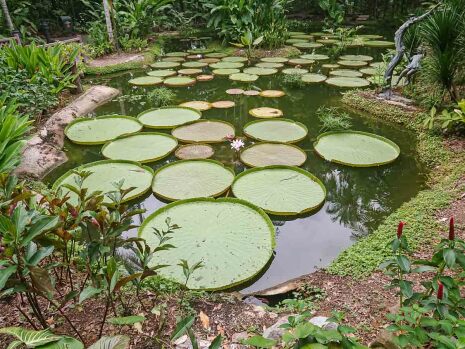
Singapore Botanic Gardens, a UNESCO World Heritage Site since 2015, is the world’s first tropical garden to receive this honor. Spanning 82 hectares just minutes from the city center, this historic oasis—established in 1859—blends lush biodiversity with cultural heritage. Wander through themed gardens showcasing over 10,000 plant species, from the vibrant National Orchid Garden to the tranquil Swan Lake and protected rainforest pockets teeming with wildlife.
Designed for serenity, it offers a green escape amid skyscrapers, perfect for nature lovers, photographers, or anyone seeking peace. With its legacy of conservation and accessibility, the gardens remain a living museum where history, science, and natural beauty converge.
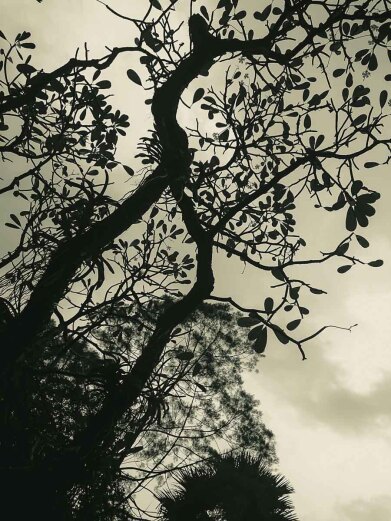
Singapore Botanic Gardens’ must-see highlights include the National Orchid Garden , bursting with 1,000 species and 2,000 hybrids—including Singapore’s national flower, the Vanda Miss Joaquim —alongside rare blooms. Nearby, Swan Lake enchants with water lilies and graceful swans, ideal for photos or quiet reflection. The 6-hectare Rain Forest , one of the oldest sections, teems with native wildlife like frogs, monitor lizards, and rustling palms.
Families will love the Jacobian Children’s Garden , where water play zones and discovery trails make learning about ecosystems fun. At Tanglin Gate , the iconic Sir Stamford Raffles Bust marks the main entrance, leading to the historic Bandstand, which occasionally hosts free weekend concerts. Together, these attractions blend natural wonder, education, and heritage into a vibrant urban escape
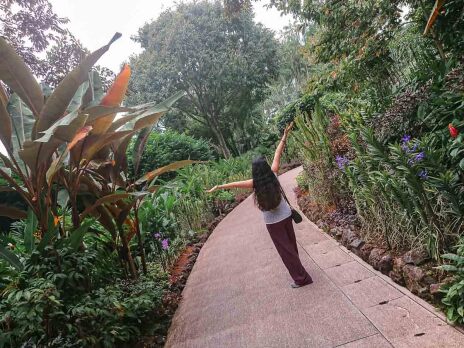
Singapore Botanic Gardens offers diverse ways to explore its lush expanse. Join free guided walks to uncover hidden history and botanical wonders, or unwind with a picnic on the Great Lawn beneath towering trees. Discover plant science and colonial heritage at the Botany Centre , or cycle scenic trails on rented bikes or e-scooters. For photographers, sunrise/sunset bathes the gardens in soft light, while macro lenses reveal rainforest textures and orchid reflections in ponds.
Open daily from 5 AM–midnight , entry is free except the National Orchid Garden (SGD $5 adults, $1 children/seniors). Located at 1 Cluny Road , it’s accessible via Botanic Gardens MRT (Circle/North-South Line), buses, or a 15-minute walk from Marina Bay’s JW Marriott. Whether seeking adventure, education, or tranquility, the gardens blend nature, culture, and accessibility for all.
Buddha Tooth Relic Temple
A Journey into Serenity
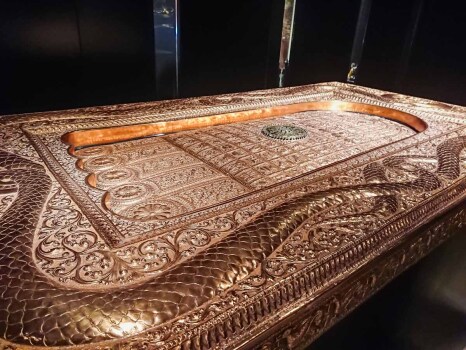
More than simply a house of worship, the Buddha Tooth Relic Temple and Museum is a masterwork of spiritual architecture, cultural diversity, and subdued devotion, all nestled in the center of Singapore's bustling Chinatown. This temple provides a deep experience for anybody, whether they are a devoted Buddhist, an architecture enthusiast, or just an inquisitive tourist.
The temple was finished in 2007 and combines contemporary architecture with the elaborate, symmetrical, and intricate architectural style of the Tang Dynasty. It is solely open to monks, although tourists can see it from a public gallery. It is named for a revered Buddha's tooth relic that is kept in a golden stupa on the fourth floor. With monks chanting gently and worshipers praying, the mood is intensely spiritual.
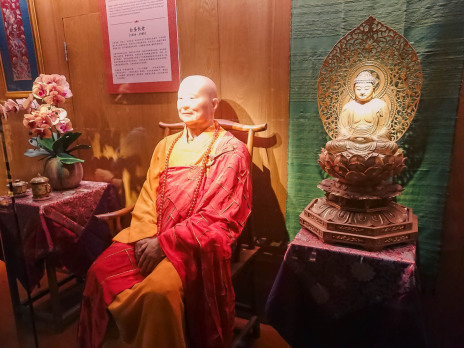
This temple is more than just a beautiful main hall; it also serves as a museum, cultural center, and spiritual retreat. The Hundred Dragons Hall, with golden statues and vibrant décor, the Buddhist Culture Museum, showcasing sacred items, the Sacred Light Hall, housing the Buddha Tooth Relic and a dazzling stupa, and the peaceful Rooftop Garden, with a prayer wheel, greenery, and Singapore's national flower, the orchid, are all must-sees.
This temple strikes a mix between grandeur and intimacy, maintaining a serene atmosphere despite tourists. The air is thick with incense, saffron-robed monks glide through hallways, and gongs or chanting contribute to the peaceful atmosphere. Entry is free, but modest dress is requested; shawls are supplied at the entrance if necessary.
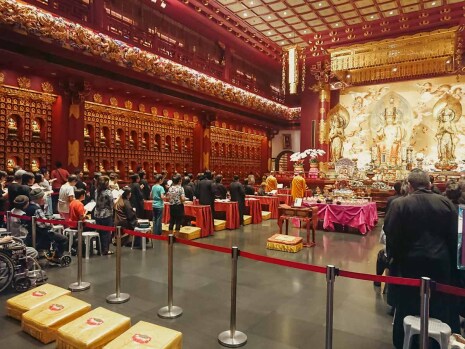
Practical Tips
Open everyday from 7 a.m. to 7 p.m. Early morning is the best time to visit for a more tranquil and cooler atmosphere.
Located at 288 South Bridge Road, Chinatown, Singapore. The nearest MRT station is Chinatown (Exit A).
The Buddha Tooth Relic Temple is a must-see, not only for its spiritual significance, but also for the peace it provides in the midst of Singapore's hectic pace. It exemplifies Buddhist devotion and the city's eclectic culture. Even a quick visit might provide a sense of calm and introspection.
Chinatown
Exploring the Heart of Culture
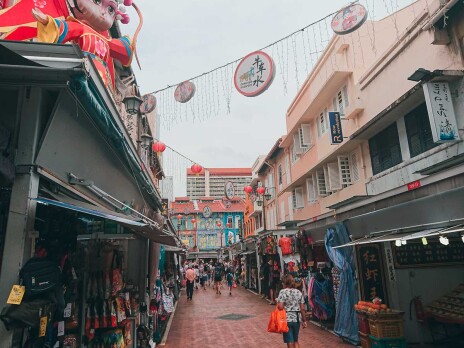
Overview
If there is one district in Singapore that seamlessly blends history, tradition, and current energy, it is Chinatown. This vibrant quarter is more than simply a cultural hub; it's a sensory journey through the past and present, weaving a vivid tapestry of stories, tastes, and architectural marvels.
A Walk Through Time
Chinatown evokes a sense of nostalgia. Its historic shophouses, with their bright façade and tiled roofs, recall Singapore's colonial past. Some 19th-century buildings have been converted into teahouses and galleries. The breathtaking Buddha Tooth Relic Temple, a Tang-style masterpiece, combines spirituality and culture. With its stately interiors, prayer sessions, and calm rooftop garden, it provides a pleasant retreat for all guests.

Street Life and Market Vibes
Stroll down Pagoda and Trengganu Streets, where souvenir sellers, silk stores, and Chinese medicine halls are thriving.
As residents and tourists enjoy the bustling environment, the air is filled with the fragrances of incense, spices, and street cuisine. Intricate murals show daily life in ancient Chinatown, paying homage to the neighborhood's immigrant and working-class roots.
A food lover's paradise
Chinatown is a sensory delight, with Michelin-starred street cuisine and cheap dumpling vendors. For local favorites such as Hainanese chicken rice and chili crab, head to the busy Chinatown Complex Food Centre. A journey down Smith Street ("Food Street") provides a magnificent dining experience, with lantern-lit tables and the smells of sizzling woks creating an amazing ambiance.
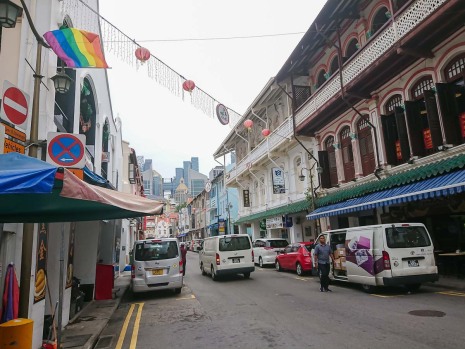
Where Past Meets Present
Singapore's Chinatown brilliantly combines tradition and contemporary. In addition to old temples and shophouses, refurbished historical buildings host stylish cafés, rooftop bars, and co-working spaces. This balance of old and modern reflects Singapore itself—a city that values its history while forging ahead.
Pro Tip:
Visit during Chinese New Year for stunning lanterns, energetic performances, and vibrant night markets. Join a history trip to discover Chinatown's hidden stories. For a peaceful rest, visit Ann Siang Hill Park, a calm green oasis with breathtaking views near Club Street.
Sri Mariamman Temple
A Glimpse into Spiritual Grandeur
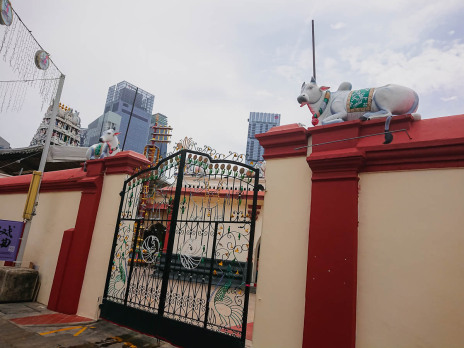
A vivid first impression
The temple's tall gopuram, adorned with bright sculptures of Hindu gods and fantastical creatures, immediately draws visitors in.
Every detailed element conveys a tale, enticing visitors to appreciate the workmanship. Built in 1827 by Indian immigrant Naraina Pillai, this ancient sanctuary began as a Tamil Hindu devotional place and is now open to both believers and travelers.
A tranquil sanctuary
The busy streets melt away as you enter, revealing a tranquil sanctuary filled with incense and jasmine. The temple bells clang as priests perform ceremonies, and devotees pray and light candles for Sri Mariamman, the protecting goddess.
Inside, shrines to Durga, Ganesh, and Shiva contain bright sculptures and painted ceilings that represent Hindu beliefs.
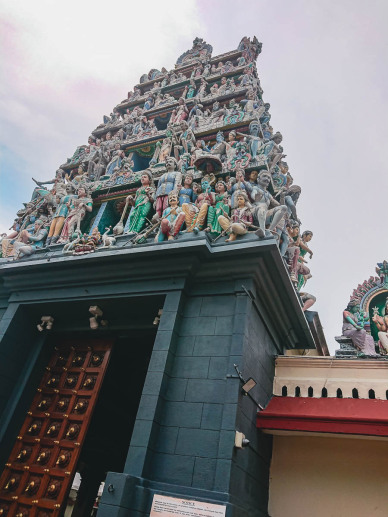
A vibrant cultural hub
Sri Mariamman Temple is more than simply a place of worship; it is the heart of Singapore's Indian community.
It glows brightly at Hindu festivals, particularly Theemithi, when devotees walk across hot coals in an awe-inspiring display of faith.
Visit during a festival to witness the temple illuminated with lighting, garlands, and happy music, brimming with cultural vitality.
Reasons to visit
Even non-religious visitors can admire Sri Mariamman Temple's cultural significance and breathtaking workmanship.
It embodies Singapore's cosmopolitan spirit, in which different faiths cohabit.
Entry is free (donations are accepted).
Dress modestly (cover shoulders/knees) and remove your shoes.
Photography is permitted in specific places; please be attentive during prayers.
From Chettiars to Financiers
Telling Stories Through Bronze
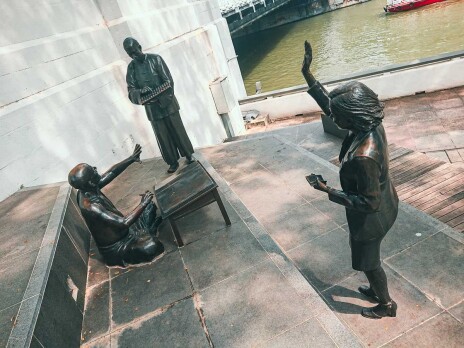
Overview
A quietly striking bronze sculpture named "From Chettiars to Financiers" rests on the outskirts of Raffles Place, Singapore's thriving financial hub.
While surrounded by contemporary skyscrapers and slick office complexes, this sculpture transports you back in time, to a time when Singapore's economic heartbeat had a totally different rhythm.
A Bronze Homage
Crafted by Singaporean sculptor C.H. Tong, this striking artwork honors a distinctive era in the nation’s financial past—the contributions of the Chettiars. Originating from South India, these traditional moneylenders were vital to Singapore’s economic growth during the 19th and early 20th centuries. The sculpture serves as a lasting tribute to their significant role in shaping the country’s prosperity.
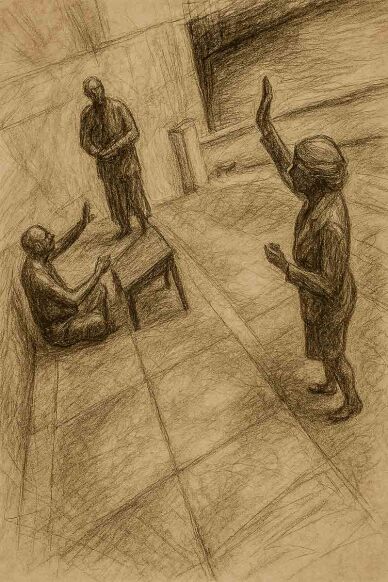
Past & Present Finance
Though modest in scale, this sculpture is deeply symbolic. It depicts a cross-legged Chettiar seated among scrolls, ledgers, and coins—symbols of his trade. Beside him stands a contemporary banker in a suit, holding a briefcase and smartphone. This contrast highlights Singapore’s financial journey—from traditional, trust-based lending to today’s tech-driven, global banking hub.
History Carved in Metal
This sculpture honors the Chettiars—moneylenders from Tamil Nadu who shaped Singapore’s early economy.
Before modern banks existed, they provided vital loans to traders, businesses, and colonial officials from their humble kittangis (office-homes) in areas like Market Street.
Their trusted lending practices helped fuel the city’s growth, laying the foundation for today’s thriving financial sector.
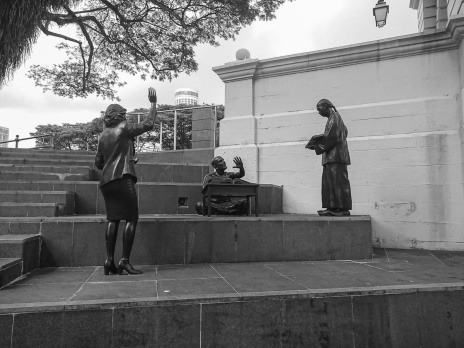
Time Stands Still
Tucked in Singapore's bustling heart, this sculpture offers a quiet moment. More than art, it's a story in bronze—reminding us that beneath the modern skyline lie tales of immigrants, risk-takers, and community builders. The Chettiar and modern banker stand side by side, showing how progress honors heritage. Perfect for thoughtful travelers seeking meaningful snapshots and insights into Singapore's evolution.
Travel Tip:
Spot this sculpture near Raffles Place, between UOB Plaza and the Singapore River. Pair your visit with a stroll through the Civic District—an open-air gallery of public art narrating Singapore’s past. For the best experience, come at sunset: golden light illuminates the bronze, and the fading business buzz lets you appreciate it in quiet serenity.
A Great Emporium
Sculpting Singapore’s Trading Past
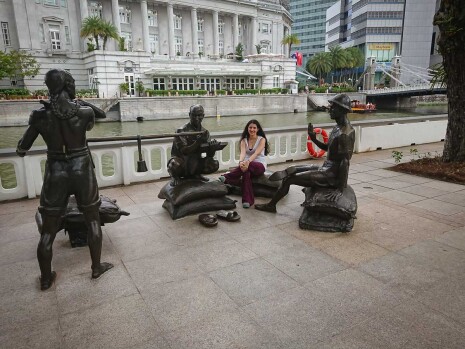
Riverside Chronicles
Strolling along the Singapore River near Boat Quay, you'll discover "A Great Emporium" - not just a sculpture but a storyteller in bronze. Part of the Open Air Interpretive Centre, this dynamic piece forms a visual timeline of Singapore's remarkable transformation from sleepy fishing village to thriving global port. Perfect for history-loving travelers seeking meaningful moments along their waterfront walk.
Portrait of Trade
This captivating bronze sculpture freezes a vibrant moment from 19th-century Singapore - merchants haggling, laborers unloading goods, bullock carts piled with produce. Life-sized figures pull you into their world, their dynamic textures suggesting paused motion. While kids play on it and tourists snap photos, "A Great Emporium" quietly reveals Singapore's origins as a thriving multicultural port.
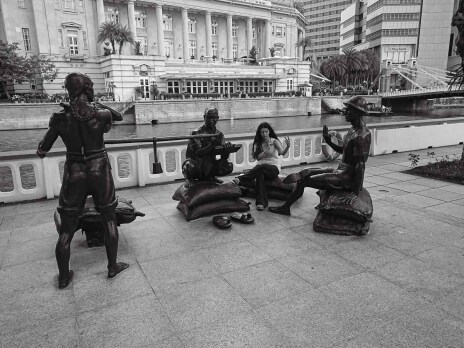
What sets A Great Emporium apart?
This isn't a museum; it exists where history transpired, mixing past and present along the Singapore River. More than just sculpture, it's a 3D tale in which traders' lifelike motions and filled carts faithfully recreate the 1800s trading frenzy. There is no need for a guide; simply linger and let the bronze sculptures take you through time.
A Living History Lesson
Malcolm Koh's masterwork honors Singapore's 19th-century status as a thriving entrepôt, the major commercial hub Raffles envisioned. Lifelike Chinese, Indian, and Malay merchant figures stand side by side, frozen in mid-barter over spices and silks. While towering buildings now line the riverbanks, this artwork brings you back to the days when bumboats and warehouses thrived here - Singapore's original commercial hub.
The Helix Bridge
Walking Through DNA

A Structure Inspired by Science
Singapore's Helix Bridge, inspired by the graceful double helix of DNA, is a captivating combination of science and art. Its twisting stainless steel structure wraps over the walkway, forming a sleek, futuristic canopy that appears to float over Marina Bay. By day, its perforated panels provide shade, while at night, LED lights convert it into a dazzling, color-shifting spectacle—both beautiful and well-designed.
A Journey With a View
Beyond its contemporary form, the Helix Bridge boasts spectacular vistas that steal the show. Stroll along its bends and take in the breathtaking views of Marina water Sands, the shimmering water, the lotus-inspired ArtScience Museum, and Singapore's spectacular cityscape. It's the ideal place to snap golden sunsets or the city's electrifying nightscape, thanks to photo-friendly observation pods jutting out over the lake.
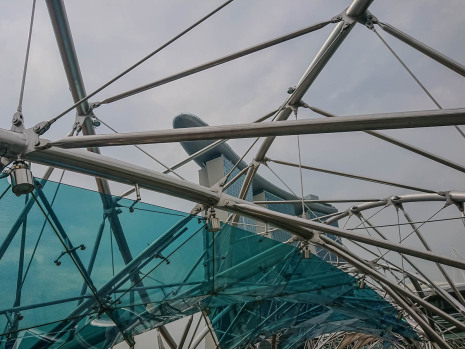
Symbolism in the Spiral
The Helix Bridge is more than just eye-catching design; it tells a deeper tale. Its winding double helix represents life and growth, reflecting Singapore's culture of innovation. Look closely and you'll notice luminous letters (C, G, A, and T) weaved into the artwork, signifying DNA's building components. This brilliant element honors both science and the city's progressive DNA—literally and symbolically!
A Link Between Landmarks
This architectural masterpiece unites Singapore's most stunning districts: Marina Centre's luxury stores and restaurants on one end, Marina Bay Sands' futuristic skyline and Gardens by the Bay on the other. Whether you're on your way to the Spectra Light Show, a Esplanade concert, or simply going for a walk in the evening, crossing the Helix Bridge is a memorable experience.

